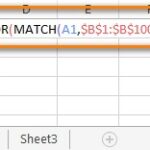The word “compare” itself functions primarily as a verb, meaning to examine two or more things in order to note similarities and differences. However, there isn’t a single, universally accepted noun form of “compare.” Instead, several nouns convey the act or result of comparing. This article will explore those nouns and their usage.
Nouns Related to the Act of Comparing
While “compare” isn’t directly a noun, related nouns describe the process of comparison. These include:
- Comparison: This is the most common and straightforward noun associated with comparing. It refers to the act or instance of comparing, or the process of examining similarities and differences. For example: “The comparison of the two products revealed significant differences in performance.”
- Juxtaposition: This noun describes the act of placing two things side by side, often for the purpose of comparing or contrasting them. It emphasizes the visual or conceptual placement of the items being compared. Example: “The juxtaposition of the old and new buildings highlighted the architectural evolution of the city.”
- Contrast: While often used as a verb, “contrast” can also function as a noun to represent a difference or something that is strikingly different. For example: “The contrast between their personalities was noticeable.” This highlights the difference resulting from comparison.
- Analysis: Although broader than just comparison, “analysis” can involve comparing different elements or aspects of something. It suggests a deeper, more systematic examination. Example: “A comparative analysis of the data revealed a clear trend.”
Nouns Related to the Result of Comparing
Other nouns focus on the outcome or findings of a comparison:
- Similarity: This noun represents a point of resemblance or likeness between things that have been compared. For example: “The study found similarities in the genetic makeup of the two species.”
- Difference: This noun represents a point of dissimilarity or unlikeness. Example: “The key difference between the two approaches lies in their underlying philosophy.”
- Analogy: This noun represents a comparison between two things, typically for the purpose of explanation or clarification. It often highlights a shared relationship or function. For example: “He drew an analogy between the human brain and a computer.”
- Parallel: This noun can signify a similarity or resemblance between two things, often highlighting a correspondence in development or trajectory. For example: “The historian drew parallels between the two historical events.”
Using Context to Choose the Right Noun
The best noun to use depends heavily on the specific context. Consider what aspect of comparing you want to emphasize: the act of comparing, the method of comparing, or the result of comparing. “Comparison” is a general term, while others like “juxtaposition” or “analogy” offer more specific nuances.
For instance, when discussing a detailed examination of two poems, “analysis” might be appropriate. When highlighting the placement of two artworks side-by-side in a gallery, “juxtaposition” would be a more fitting choice. If identifying points of likeness, “similarity” or “parallel” would be suitable.
Conclusion
While “compare” lacks a direct noun equivalent, a range of nouns effectively captures the essence of comparing, whether focusing on the act, method, or result. Selecting the most accurate noun depends on understanding the nuances of each word and the specific context of your writing. By carefully choosing the appropriate noun, you can precisely convey your intended meaning and enhance the clarity of your communication.
